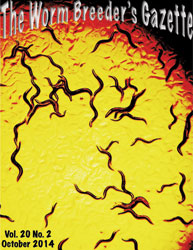Acetaldehyde (AA) is the first metabolite of ethanol in humans', animals' and plants' organisms as well as widespread pollutant with powerful toxic effect on nervous system of humans and animals.
In this study we compare sensitivity of worms of wild type strain N2 and mutant strain IPE1 to AA and ethanol. Mutant strain IPE1 was previously described as strain LT with low thermostability of locomotion (Gainutdinov et al., 2007). Addition of ethanol (1-3%) or AA (75–300 µg/ml) into liquid medium disturbed locomotion induced by mechanical stimuli of worms of both strains, but these reversible disturbances were different: AA evoked specific form of behavior disturbance similar to kinked motion and coiled posture of unc-1 and unc-8 mutants (Park and Horvitz, 1986). Ethanol induced numerous forms of swimming incoordination but not worms' kinking or coiling. Concentrations of AA and ethanol evoked locomotion disturbances in 50% of worms were two fold lower in IPE1 strain than in N2 strain. These data display that worms of IPE1 strain possess of high sensitivity of behavior not only to heat (Gainutdinov et al., 2007), but also to AA and ethanol.
Under simultaneous addition of AA and ethanol into incubation medium in experiments with worms of N2 strain we revealed strong and unusual interaction between ethanol and AA: low concentrations of AA (30–75 µg/ml) reduced locomotion disturbances induced by ethanol while low concentrations of ethanol (0.5–1.0%) prevented kinked motion and coiled posture induced by AA. This cross modulation of AA and ethanol effects rather weekly appeared in experiments with worms of IPE1 strain. These results indicate that worms of IPE1 strain are hypersensitive to unfavorable effect of AA, but hyposensitive to protective effect of AA in the presence of ethanol.
This conclusion is confirmed by results of experiments in which worms of both strains were exposed during 16 hours to selective inhibitor of aldehyde dehydrogenase (ALDH) – disulfiram (0.8 mg/ml) on agar plates seeded with E. coli OP50. It is known that disulfiram increases concentration of AA produced during ethanol metabolism. In our experiments with N2 strain of C. elegans disulfiram strongly protected worms behavior against disturbances induced by ethanol. This protection is very slight in worms of IPE1 strain. These results indicate that AA as the first ethanol metabolite modulates ethanol effect upon simple nervous system of C. elegans by protecting behavior against unfavorable action of alcohol. This adaptive modulation is broken in the worms of IPE1 strain. It is evident that locomotion sensitivity to unfavorable effect of exogenous AA in the medium without ethanol and sensitivity to modulation of ethanol effect by AA produced from ethanol or by exogenous AA in the medium containing ethanol are two different traits, modified in IPE1 strain, since differences of these traits between N2 and IPE1 strains are opposed.
References
Gainutdinov MKh, Timoshenko AKh, Gainutdinov TM, and Kalinnikova TB. (2007). Characterization of new Caenorhabditis elegans strains with high and low thermotolerance. Russian J. Genetics 43, 1014–1020. 
Park ECh and Horvitz HR. (1986). Mutations with dominant effects on the behavior and morphology of the nematode Caenorhabditis elegans. Genetics 113, 821–852. 




